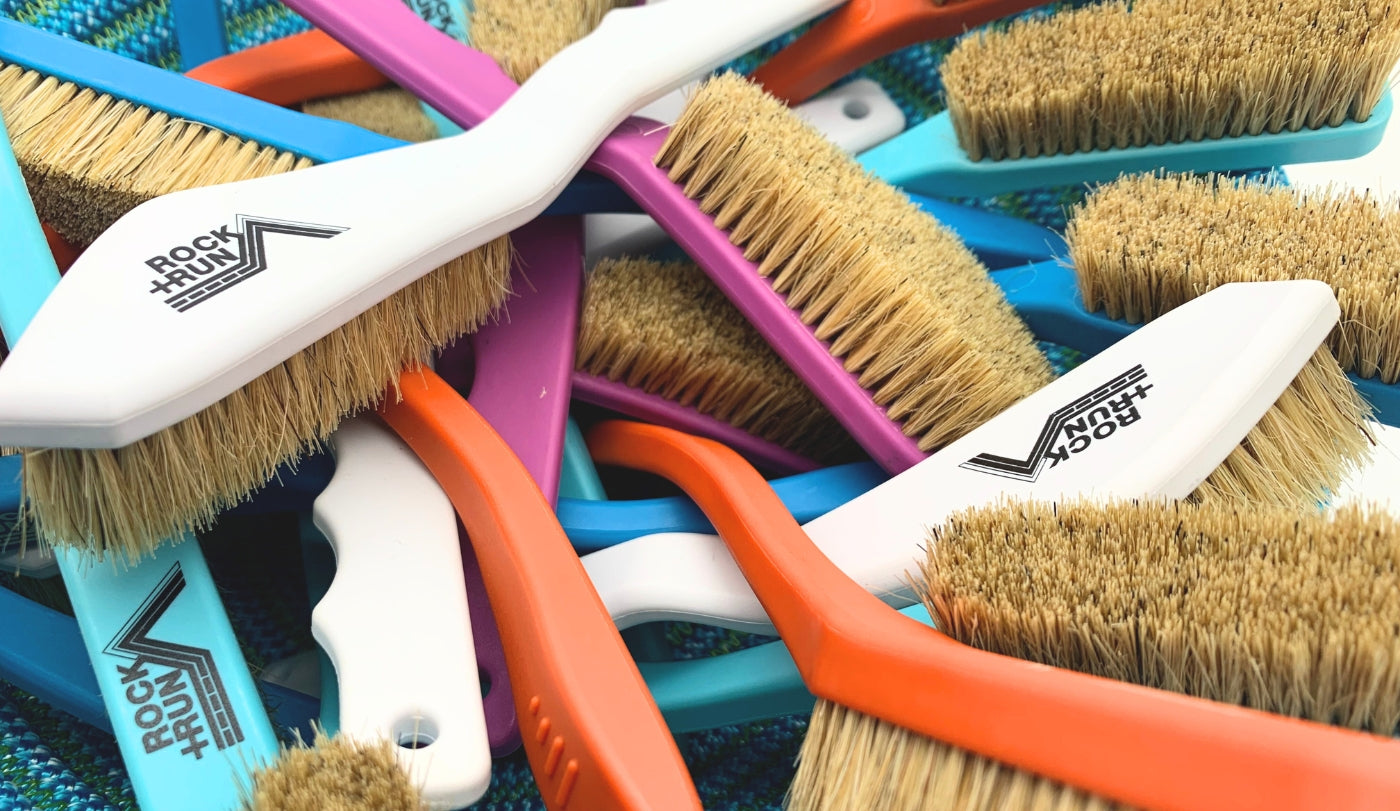In the beginning (Leeds University, 1964 to be precise), climbing walls were conjured up as training facilities for climbers looking to push the standards of what was possible out on the crags at the time. Obviously a lot has changed since then and indoor climbing is now practiced by millions all around the world - the equipment has moved on too, from chipped concrete edges, glued in rock, wooden holds to amazingly sculpted modern resin holds. Here at Rock + Run we often get asked about what climbing holds will be suitable for children. Although there aren’t really any hard and fast rules on the subject, there are a few commonly made mistakes which hopefully we can steer people away from. The first thing to consider when looking at purchasing your holds is the surface you’ll be mounting them on, and therefore what fixings you’ll be using. The 2 commonly used methods of attachment are using either screws, or bolts.
Screw-on Holds
On the face of it screw-on holds are very tempting to many people building a wall for the first time – they’re quick and simple to attach and most attractively of all cheap in comparison to bolt on holds. The downside however is that these holds are typically very small and not so easily adjusted when setting routes. None of the screw-on holds we sell (and very few that are commercially available) are suitable for children – they are primarily intended for use as footholds, and for small handholds on harder routes. For more advanced young climbers they can of course be used for this purpose in combination with bolt on holds for hands.
Bolt On Holds
These are the bread and butter of any climbing wall; easy to attach and move around and available in a myriad of shapes and sizes. There is already a plethora of information available on the internet on exactly how to fix climbing holds to different surfaces so I shall only run through the basics and the different options available here. By far the most common mounting surface for indoor walls is 18mm plywood board. These are fitted with regularly spaced T-Nuts, into which M10 bolts can be screwed – these are available in a number of lengths to suit different sized holds (all of our climbing holds are sold equipped with these fixings). Although plywood is probably the ideal mounting surface, turning an existing outside structure, such as a brick or concrete wall into a kids ‘traversing’ wall is an increasingly popular idea. Many schools and playgrounds now have these traversing walls, where the footholds are just above ground level, and young climbers can traverse along sideways in a crab like fashion.  There are a few important things to consider when attaching holds to brick or concrete, the first of which should clearly be whether the structure is strong enough to take the extra load – if in doubt consult the services of a professional! Next you will need some fixings to screw the bolts in to - M10 drop in anchors being the standard option. These will need to be rimless so that the hold will sit flush against the wall – if not then the hold will spin. The concrete or brick also needs to be solid enough to accept this type of fixing or else it will simply spin inside the hole. The image above shows a cross section of how a bolt on climbing hold is normally used in conjunction with a plywood wall or 'board'. It’s probably also worth pointing out that although all our holds are of absolutely the highest quality using holds outside does decrease their life compared to inside. Rough or irregular surfaces will also damage holds, so make sure the wall you’re using is suitably smooth. Also think carefully about the positioning of your holds as frequent movement is likely to damage the fixings.
There are a few important things to consider when attaching holds to brick or concrete, the first of which should clearly be whether the structure is strong enough to take the extra load – if in doubt consult the services of a professional! Next you will need some fixings to screw the bolts in to - M10 drop in anchors being the standard option. These will need to be rimless so that the hold will sit flush against the wall – if not then the hold will spin. The concrete or brick also needs to be solid enough to accept this type of fixing or else it will simply spin inside the hole. The image above shows a cross section of how a bolt on climbing hold is normally used in conjunction with a plywood wall or 'board'. It’s probably also worth pointing out that although all our holds are of absolutely the highest quality using holds outside does decrease their life compared to inside. Rough or irregular surfaces will also damage holds, so make sure the wall you’re using is suitably smooth. Also think carefully about the positioning of your holds as frequent movement is likely to damage the fixings.
Hold Selection
Unless you’re looking for holds to test the next young Adam Ondra then by and large, medium to large sized positive holds are the way to go. This mainly means a type of hold called jugs, of which the Core Mini-Jug range and Bleaustone 30 Degree and 45 Degree warm-up jugs are particularly suitable. The Core micro-jugs and pockets may also be worth considering, providing a challenge for more advanced young climbers
Quantity
With regards to the number of holds you’ll need, then the general rule of thumb is 10 holds per square meter of wall. For a traversing wall it is again 10 holds per meter of length. Obviously more holds provide more different possibilities for moves and variations, which should make your wall more interesting, and less holds less so. Anyway, whichever holds you decide to buy, good luck and have fun!














